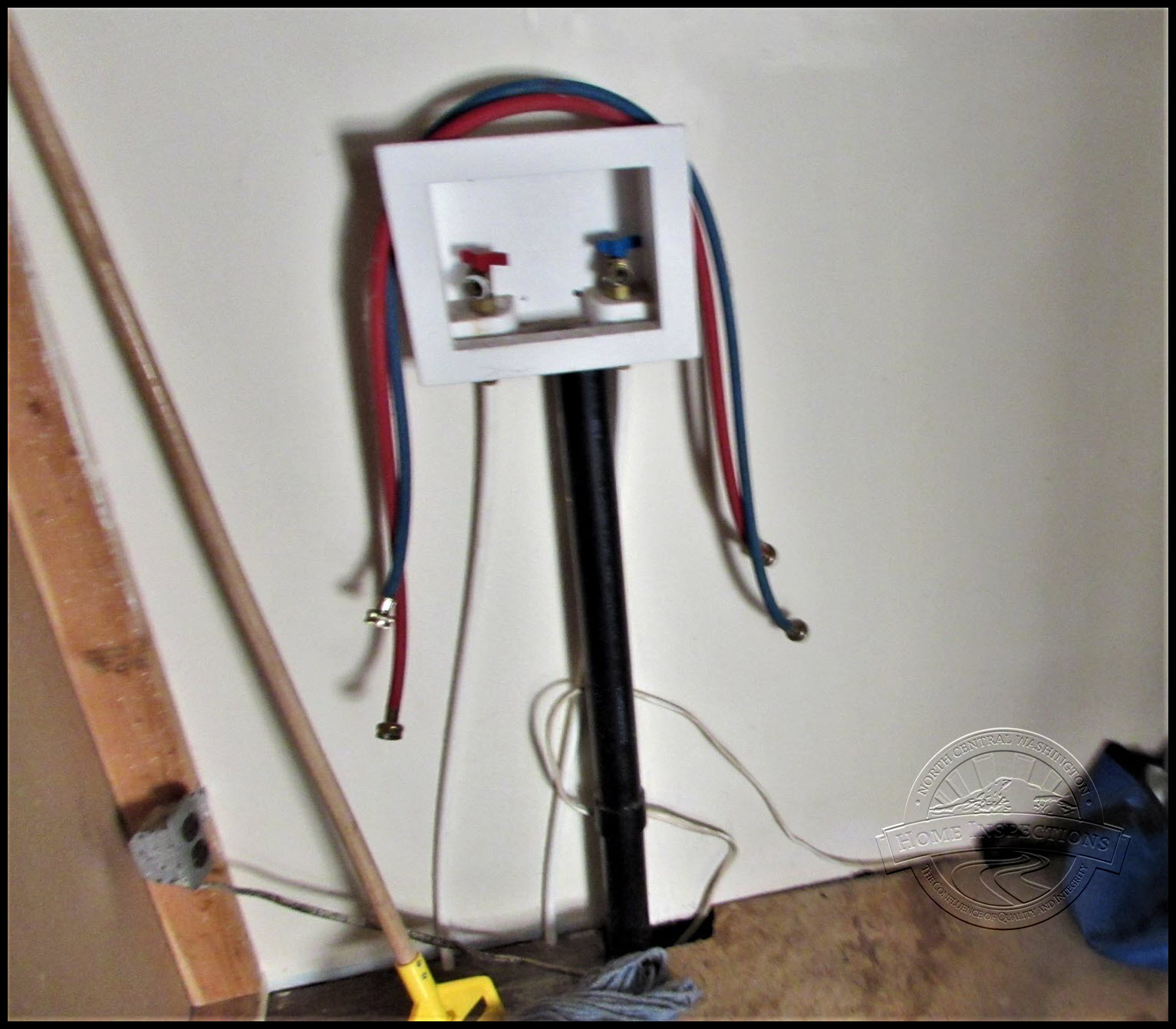Stand (Pipe) Corrected


Often people do remodels or add sections to their homes. This is much more common in older homes that do not have some the conveniences that our more modern homes do. The issue is before you take on these project you should either consult or hire professional trades people to help you plan and budget for the project you are to complete.
Here is an example of a project that has gone a bit awry. This was an added laundry area where there was none before. Once you start down the path of these project you will need to perform them to the current code standards as required. Lets just take one piece of this and that is the laundry standpipe.
Standpipes for clothes washer cannot have the trap below the flow.
Excerpt From UPC 804.1
“No trap for a clothes washer standpipe receptor shall be installed below the floor, but shall be roughed in not less than 6 inches (152 mm) and not more than 18 inches (457 mm) above the floor.”
As with all traps there are specific rules on how they are to be installed. This is the ensure they function properly (Properly scour and maintain trap seal).
This is a pretty basic requirement from most model plumbing codes.
When in doubt call someone who can help you or the local building department.

Here are some of the codes relating to standpipes and traps-
2018 UPC (Used in Washington State)
1001.2 Where Required
Each plumbing fixture, shall be separately trapped by an approved type of liquid seal trap. This section shall not apply to fixtures with integral traps. Not more than one trap shall be permitted on a trap arm. Food waste disposers installed with a set of restaurant, commercial, or industrial sinks shall be connected to a separate trap. Each domestic clothes washer and each laundry tub shall be connected to a separate and independent trap, except that a trap serving a laundry tub shall be permitted to also receive the waste from a clothes washer set adjacent thereto. The vertical distance between a fixture outlet and the trap weir shall be as short as practicable, but in no case shall the tailpiece from a fixture exceed 24 inches (610 mm) in length. One trap shall be permitted to serve a set of not more than three single compartment sinks or laundry tubs of the same depth or three lavatories immediately adjacent to each other and in the same room where the waste outlets are not more than 30 inches (762 mm) apart and the trap is centrally located where three compartments are installed.
804.1 Standpipe Receptors
Plumbing fixtures or other receptors receiving the discharge of indirect waste pipes shall be approved for the use proposed and shall be of such shape and capacity as to prevent splashing or flooding and shall be located where they are readily accessible for inspection and cleaning. No standpipe receptor for a clothes washer shall extend more than 30 inches (762 mm), or not less than 18 inches (457 mm) above its trap. No trap for a clothes washer standpipe receptor shall be installed below the floor, but shall be roughed in not less than 6 inches (152 mm) and not more than 18 inches (457 mm) above the floor. No indirect waste receptor shall be installed in a toilet room, closet, cupboard, or storeroom, or in a portion of a building not in general use by the occupants thereof; except standpipes for clothes washers shall be permitted to be installed in toilet and bathroom areas where the clothes washer is installed in the same room.
2018 IPC
802.4.3 Standpipes.
Standpipes shall be individually trapped. Standpipes shall extend not less than 18 inches (457 mm) but not greater than 42 inches (1066 mm) above the trap weir.
Access shall be provided to standpipes and drains for rodding.
802.4.3.1 Connection of laundry tray to standpipe.
As an alternative for a laundry tray fixture connecting directly to a drainage system, a laundry tray waste line without a fixture trap shall connect to a standpipe
for an automatic clothes washer drain. The standpipe shall extend not less than 30 inches (732 mm) above the weir of the standpipe trap and shall extend above
the flood level rim of the laundry tray. The outlet of the laundry tray shall not be greater than 30 inches (762 mm) horizontal distance from the side of the
standpipe.
If you find any errors or have additional information that would expand on any code, building standards or manufacturer requirements please let me know.
NCW Home Inspections, LLC is a Licensed Washington State Home Inspection service located in Wenatchee Washington serving Chelan County, Douglas County, Kittitas County, Okanogan County and Grant County Washington and the cities of Wenatchee, Leavenworth, Cashmere, Oroville, Cle Elum, East Wenatchee, Quincy and many more…
Your Wenatchee and Chelan Professional Real Estate, Home and Structural Pest Inspection Service
Coordinator & Instructor- Fundamentals of Home Inspection- Bellingham Technical College
Former WA Home Inspector Advisory Licensing Board
www.ncwhomeinspections.com 509-670-9572
You can follow me on Facebook, Twitter, Google+ and on my website Blog.
If you find any errors or have additional information that would expand on any code, building standards or manufacturer requirements please let me know.
NCW Home Inspections, LLC is a Licensed Washington State Home Inspection service located in Wenatchee Washington serving Chelan County, Douglas County, Kittitas County, Okanogan County and Grant County Washington and the cities of Wenatchee, Leavenworth, Cashmere, Oroville, Cle Elum, East Wenatchee, Quincy and many more…
Your Wenatchee and Chelan Professional Real Estate, Home and Structural Pest Inspection Service
Coordinator & Instructor- Fundamentals of Home Inspection- Bellingham Technical College
Former WA Home Inspector Advisory Licensing Board
www.ncwhomeinspections.com 509-670-9572
You can follow me on Facebook, Twitter, Google+ and on my website Blog.
(Click on Icons to go to social media pages.)




